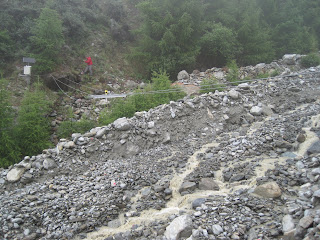WSL Institute for Snow and Avalanche Research SLF
It is not as white as the first time I have been at SLF but it has not lost its charm and delightfulness at all...
Straight away I felt a part of the group again. In our first meeting we discussed the new experiment device and how we are going to perform a set of experiments starting from the physic concept of pore pressure. We exchanged interesting papers which will be very useful to consider for our experiments.
The atmosphere is great and relaxing. The meetings are from "formal meetings" to "technical chats" during coffee time or at lunch...
I had the chance to share my knowledge and previous experiences in particular my work at the University of Nottingham (
Civil Engineering). From the first day at SLF it has been a two-way process. While discussing the experimental facilities, measurement methods used and how to assess the flow behaviour, I also learned ways to overcome or improve some difficulties of my experiments. I had good explanations in different fields (calculations, physics, instrumentation).
 |
| Set-up experiment at Nottingham, UK. |
 |
| Two-phase flows experiments |
We are going to use the collected data from my experiments at Nottingham (two phase flows experiments) and to compare it with their experiment data of dry flows (one phase flows). Another one of our objectives is to analyze the experiment data to verify simple flow models.
 Louis Bugnion
Louis Bugnion at the workshop laboratories of SLF is fitting two force plates into the debris chute in order to measure the shear and normal forces at the bed surface for dry flow experiments. We discussed the difficulties of taking the different required measurements during the experiments.
Other issues that we commented:
- Chute design
- Roughness surface
- Lagrangian / Eulerian description
- Velocity profiles - pattern matching algorithm

































